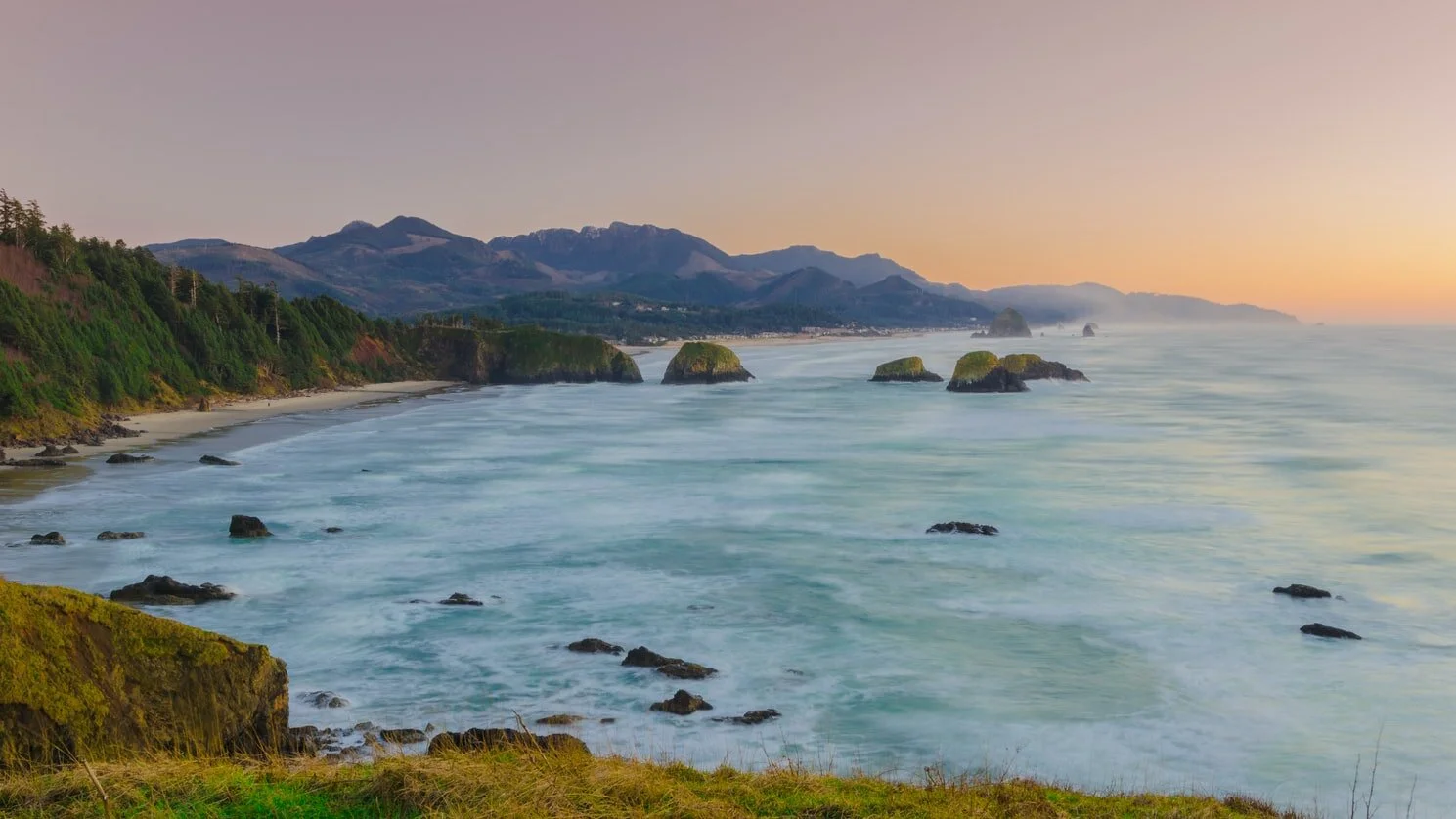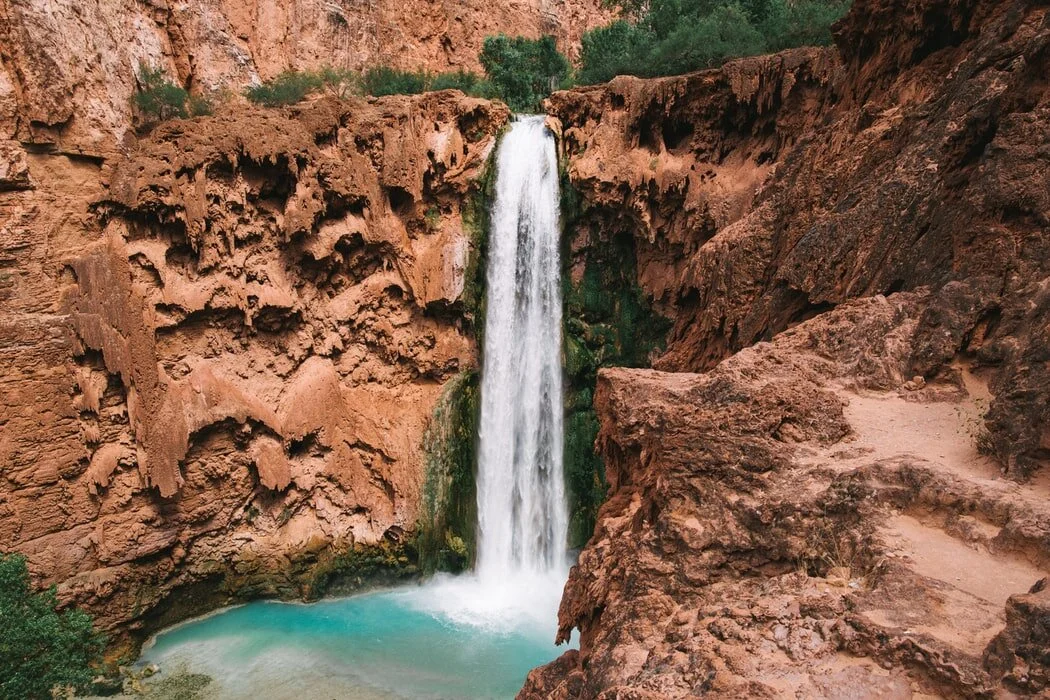With COVID-19 still rampant across the United States, the Centers for Disease Control and Prevention discourages domestic and international travel. Health officials also urge citizens to stay home and continue social distancing, as rising cases directly link to increased travel. However, once the pandemic dissipates and travel becomes feasible, these remote destinations will provide visitors with peace and solitude.
1. Big Bend National Park, Texas
Sunset in Big Bend National Park. G. Lamar. CC BY 2.0
Named for the vast curve of the Rio Grande, Big Bend National Park is a diverse region with endless possibilities for adventure and discovery. As the largest protected area in the Chihuahuan Desert, temperatures in the park typically exceed 100 degrees Fahrenheit by late morning. Despite this harsh environment, the park protects more than 1,200 species of plants, 450 species of birds and 75 species of mammals. At night, visitors will witness cougars, roadrunners, foxes and bears foraging for food. Big Bend also contains the Chisos Mountains, the only mountain range in the United States to be fully contained within the boundary of a national park. With elevations reaching over 5,000 feet, hiking, mountain biking, and zip lining are popular activities. Along the park’s rivers, visitors can also partake in horseback riding, kayaking and camping. Regarded as one of the most remote areas in the United States, Big Bend offers idyllic isolation.
2. Lubec, Maine
The West Quoddy Head Lighthouse in Lubec, Maine. John Getchel. CC BY-NC 2.0
As the easternmost town in the United States, Lubec offers a rugged coastline and an unrivaled sense of tranquility. The Quoddy Head State Park, located near Lubec, features hiking trails, saltwater marshes, extensive forests and diverse flora and fauna. Bears, moose, eagles, puffins, seals and whales are just a few of the animal species that call this park home. Along the coast, visitors can enjoy whale watching, kayaking and scuba diving. Further inland, common activities include golfing, cycling, berry picking and hiking. With the slogan “Small Town, Great Outdoors,” Lubec prides itself on preserving an isolated and pristine environment.
3. White Sands National Park, New Mexico
The wavelike dunes of gypsum sand in New Mexico. Howard Ignatius. CC BY-NC-ND 2.0
Located in the heart of New Mexico’s Tularosa Basin, White Sands National Park is the largest gypsum dunefield in the world. Nearly 12,000 years ago, the area featured large lakes, grasslands and diverse wildlife. Paleontologists flock to the park to study the fossilized footprints and remains of mammoths, camels, American lions, saber-toothed cats and Paleolithic humans. Nowadays, the park contains over 800 animal species, including rabbits, roadrunners, snakes and salamanders. Venturing into the dunes, visitors can experience backcountry camping, hiking, horseback riding and sand sledding. Due to the rich culture and history of the Tularosa Basin, White Sands National Park is also listed on the National Register of Historic Places. Visitors can walk along Native American trails and visit the nearby site where the first atomic bomb was tested in 1945. As one of the most underrated national parks, this area’s glistening white sands are a true natural wonder.
4. Little St. Simons Island, Georgia
A secluded beach on Little St. Simons. Mary Martin. Unsplash.
With 11,000 acres of unaltered wilderness, Little St. Simons Island is ideal for travelers seeking isolation and serenity. Along the 7-mile stretch of private beaches, visitors can enjoy kayaking, bicycling, swimming and fishing. Experienced naturalists also provide guided tours through diverse forests and wetlands, which are home to alligators, armadillos, deer, dolphins and more than 330 species of birds. Accessible only by boat, Little St. Simons is committed to solitude and sustainability, maintaining multiple organic gardens, composting facilities and nature preserves. This eco-friendly and remote destination provides an experience unlike any other island in Georgia.
5. Cannon Beach, Oregon
Sunrise over Cannon Beach. Ganapathy Kumar. Unsplash.
Known as the Pacific Northwest’s greatest escape, Cannon Beach boasts a scenic seashore surrounded by dramatic rock formations. Travelers to this unique region can experience an array of water activities, including surfing, sailing and kayaking. In nearby forests, outdoor enthusiasts will discover puffins nesting on rocks, eagles patrolling the skies and herds of elk grazing coastal meadows. Within walking distance of Ecola State Park, Cannon Beach also borders multiple mountains, providing hikers with panoramic views of the Pacific Ocean. According to National Geographic, this rugged coastline is "one of the world’s 100 most beautiful places."
6. Crested Butte, Colorado
A wildflower trail in Crested Butte. Holly Mandarich. Unsplash.
Hidden away in the Rocky Mountains of Colorado, Crested Butte is a relatively unknown destination. With less than 2,000 residents, this tiny mountain town is perfect for travelers seeking nature and seclusion. Known as “the last great Colorado ski town,” the primary winter activities are skiing and snowboarding. During warmer months, visitors can fish, hike, kayak and camp. Also deemed the “Wildflower Capital of Colorado,” this rugged landscape boasts breathtaking meadows and over 50 types of flowers. The Crested Butte Conservation Corps (CBCC) is a full-time trail crew working to protect this wild terrain. With the slogan “Leave No Trace,” CBCC prohibits littering, picking wildflowers, carving trees and feeding wildlife.
7.Havasupai Reservation, Arizona
The blue-green waters of a Havasupai waterfall. Cara Fuller. Unsplash.
Meaning “people of the blue-green water,” the Havasupai reservation encompasses a series of waterfalls and the Havasu Canyon. As one of the U.S.’s most isolated American Indian reservations, visitors must trek by foot or horseback to enter the area. The Havasupai have lived in the Grand Canyon for nearly 800 years and currently administer the reservation land, which lies outside the jurisdiction of Grand Canyon National Park. Visitors here can experience some of the most remote camping, hiking, horseback riding and swimming possible. However, respecting Native American culture is paramount. Since water is a precious resource in this arid desert, the Havasupai consider the blue-green waters to be sacred and urge visitors to respect the land. Known as “Guardians of the Grand Canyon,” the Havasupai also teach traditional ecological practices and sustainable agriculture as they adapt to climate chang
8. Denali National Park and Preserve, Alaska
Northern lights illuminate the sky in Denali National Park. Vincent Guth. Unsplash.
Denali National Park and Preserve comprises 6 million acres of Alaskan wilderness. As North America’s tallest peak, Mount Denali offers experienced hikers with an ascent of over 20,000 feet. For a more relaxed experience, travelers can partake in camping, guided walking tours, biking and wildlife sightseeing. Some of the world’s most iconic animals reside in the park, including grizzly bears, wolves, caribou, moose and eagles. Denali National Park is almost entirely free from human light pollution, allowing visitors to clearly view the aurora borealis (northern lights). With long hours of darkness in the winter, stargazers can witness this natural phenomena until late morning. As “The Last Frontier,” Alaska’s Denali National Park provides a peaceful escape into nature.
9. Apostle Islands National Lakeshore, Wisconsin
During the winter, ice caves form along the Apostle Islands. The Cut. CC BY 2.0
Apostle Islands National Lakeshore, known as the “Jewel of Lake Superior,” hosts a unique blend of natural wonders. Among 21 islands and 12 miles of mainland coast, common activities include hiking, fishing, sailing and paddle boarding. Scuba diving also allows visitors to discover shipwrecks and unique rock formations beneath the water’s surface. Yet, the most secluded attraction at Apostle Islands National Lakeshore is its rare sea caves. During the summer, visitors can kayak through red sandstone tunnels, formed by centuries of erosion. When Lake Superior freezes over, the sea caves are only accessible on foot. Passing through these colorful passageways, visitors will view thousands of icicles.
10. Glacier National Park, Montana
Glacier National Park in the early morning. Justin Kauffman. Unsplash.
Considered the “Crown of the Continent,” Glacier National Park is an ideal outdoor adventure. Visitors seeking wilderness and solitude can explore dense forests, alpine meadows and rugged mountains. Hikers can also trek over 700 miles of secluded trails. Common activities include backcountry camping, boating, cross-country skiing and fishing. While traveling on the famous Going-to-the-Sun Road, visitors will also witness glaciers, waterfalls and wildflowers. As an International Biosphere Reserve and UNESCO World Heritage Site, Glacier National Park is one of the most ecologically intact areas in the United States. Grizzly bears, wolverines, lynx and bald eagles are among the many species to thrive here. However, in an increasingly urban nation, the park is facing the effects of climate change. Melting glaciers have increased the severity of wildfires and have begun to shift wildlife habitats. As a result, Glacier National Park is committed to sustainability and reducing its carbon footprint, in the hopes that this fragile ecosystem will endure for generations to come.
Shannon Moran
is a Journalism major at the University of Georgia, minoring in English and Spanish. As a fluent Spanish speaker, she is passionate about languages, cultural immersion, and human rights activism. She has visited seven countries and thirty states and hopes to continue traveling the world in pursuit of compelling stories.











